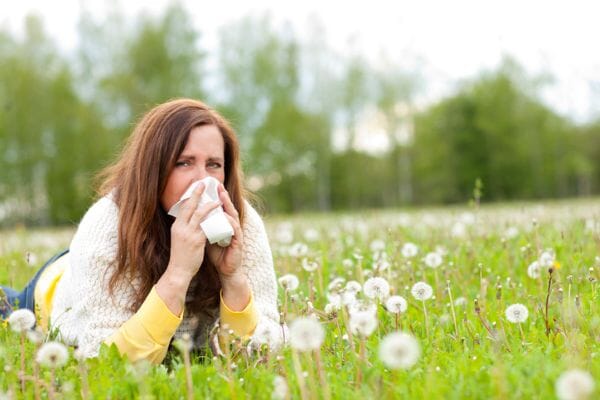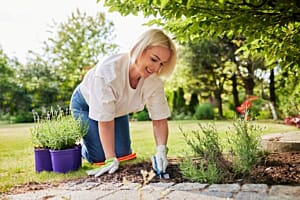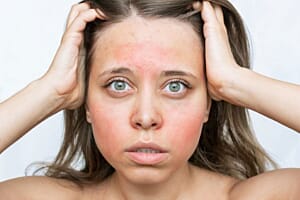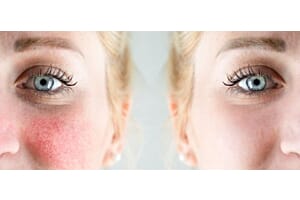It’s officially the start of hay fever season and with a mini heatwave on its way, it’s likely to kick off with full force this year.
Hay fever affects around 16 million people in the UK, which is approximately one in four of the population.
People in the UK suffer more hay fever due to the high pollen counts, which come in three phases, tree pollen from March to May, grass pollen from May to June and weed pollen from June to August. However, as temperatures have risen, grass pollen seasons may start even earlier than May.
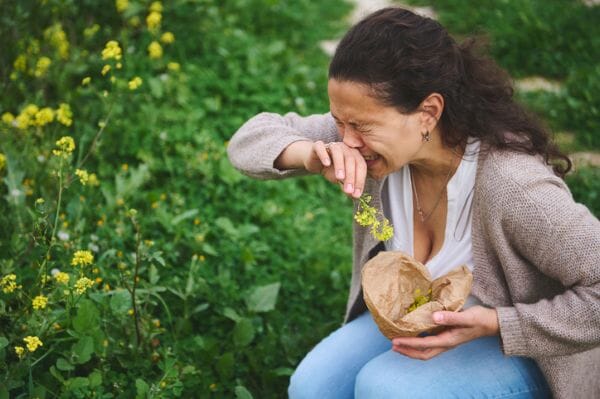
Grass pollen allergies are by far the most common type of hay fever affecting 90% of sufferers and are also often the most troublesome.
The areas in the UK with some of the highest levels of hay fever sufferers are Wales and Northern Ireland.
Hay fever season can become even more uncomfortable for those who suffer from skin conditions as hay fever can trigger certain skin conditions meaning that many people suffer from a double whammy of symptoms during hay fever season.
Dermatologist Dr Eva Melegh highlights some of the most common skin conditions that can be triggered by hay fever and how to prepare for managing them.
Hay Fever and Rosacea
Seasonal allergies such as hay fever can also be a trigger for rosacea flares due to the fact that hay fever causes inflammation in the skin and around the eyes and inflammation of the facial skin is a direct trigger for rosacea flares because the two conditions are both inflammatory responses.
Dr Melegh suggests always wearing a mineral-based SPF of at least 30 to reduce the chance of UV inflammation adding to the allergy-triggered inflammation and using skin care with anti-redness and desensitising ingredients to control red skin flares during hay fever season.
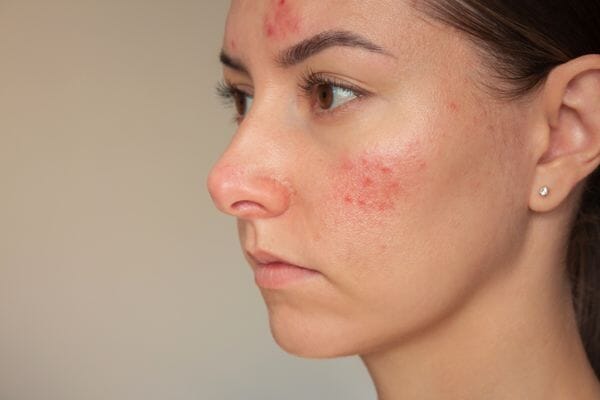
Try Kalme Skincare, with specific anti-redness and anti-inflammatory ingredients plus a pure zinc oxide SPF 30.
Dr Melegh also suggests wearing protective sunglasses and avoiding washing the face with cold water to remove pollen dust as the sudden change in temperature can trigger a rosacea flare. Instead use a gentle cream cleanser plus gentle toners to remove pollen dust and dirt from sensitive rosacea-prone skin.
Hay Fever and Eczema
Studies show that if you suffer from eczema, you are also more likely to suffer from hay fever, in fact about 80% of children with eczema also get hay fever and about 35% of adults who have eczema as adults or had it as children also suffer from hay fever.
Hay fever can trigger flare ups of eczema as both conditions have an over-reaction in both the skin and respiratory system to external irritants. So, when hay fever kicks off it appears to often have a domino effect in skin making it become hyper reactive and often triggering atopic skin flares.
Dr Melegh suggests starting to treat areas prone to eczema before any flares have started to appear with suitable preventative skin care in the run up to hay fever season to help manage and reduce the risk of eczema flares.
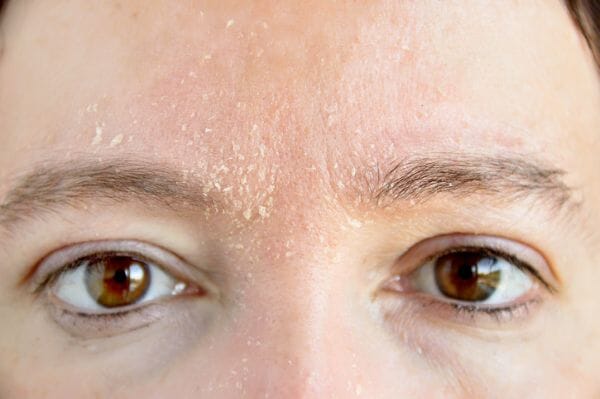
Try Hydrosil Turmeric Butter & Milk Salve, which contains anti-inflammatory turmeric to reduce redness and irritation, hypoallergenic donkey milk to calm and hydrate atopic skin and a plant steroid to quickly relieve itching.
In addition, Dr Melegh advises avoiding any sun damage to eczema prone skin, rinsing off pollen as soon as possible when getting in from outside, wearing natural fibre clothing to cover skin when outside to protect from UV damage and from pollen getting directly on the skin, keeping windows closed at night and trying to do outdoor activities such as sport and gardening in the earlier mornings when there is still some dew on the grass rather than in the evenings.
Hay Fever and Blepharitis
Blepharitis is a condition that causes inflammation of the eyelid leading to swelling and itching. It can also affect tear duct production. There are many possible causes of blepharitis, but the most common ones are reactions to make up and sun creams, contact lens solutions, hormonal changes in particular menopause, external irritants and also a tendency towards eczema on other areas of skin.
Any form of trauma or inflammation of the skin around the eyes can trigger blepharitis so hay fever is a real risk factor. Excessive rubbing of the eye area can trigger a flare of blepharitis.
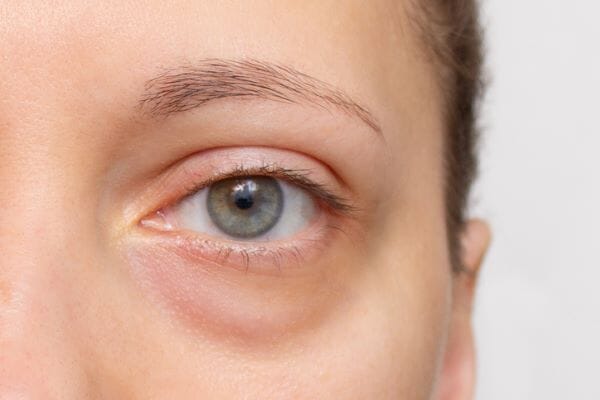
Dr Melegh advises always wearing sunglasses during pollen season and not wearing mascara during the day, as pollen can stick to it. Treating the eyelids with anti-inflammatory eye care also greatly reduces the risk of a blepharitis flare up.
Try Hydrosil Dry Eye Gel, a light non-sticky eye gel which can be worn under make up and overnight, which contains a natural plant-steroid safe for use around the eyes to control and reduce itching and inflammation on a daily basis.
Hay Fever and Acne
Hay fever can aggravate acne due to the inflammation caused by the immune response which leads to swelling of the skin. Additionally, certain Spring allergens can be comedogenic (pore-blocking substances) which could potentially lead to increases blocked pores and acne breakouts.
Dr Melegh points out that repeatedly rubbing or touching the skin due to irritation and sneezing can irritate existing acne lesions and transfer more external bacteria into them and lead to further inflammation.
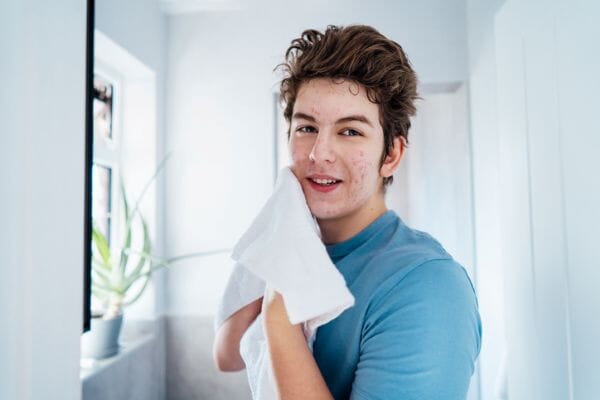
Therefore, Dr Melegh advises that if you suffer from hay fever it's important to make sure you also take more preventative care to reduce the risk of acne breakouts during the hay fever season, in particular making sure skin pores don’t get congested.
Try Clarol Sebopure, which is a light skin serum that contains a unique sebum purifying ingredient that helps keep sebum pure and uncontaminated as it pushes out through the skin pore.
Hay Fever and Cold Sores
Cold sores affect half the population and one in four people get hay fever so the likelihood of having both is quite high. Any trauma to the lips or sudden fluctuations in the immune system can trigger a cold sore, making hay fever a prime trigger.
Constant nose wiping from sneezing, inflammation of the skin around the nose and mouth as well an immune system in overdrive can all activate the cold sore virus that lies dormant in the skin around the mouth.
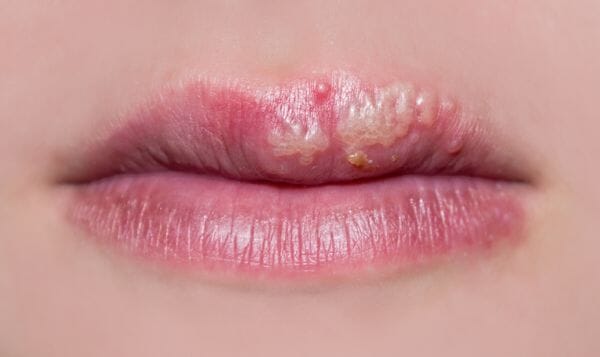
Dr Melegh advises taking extra care of cold sore prone lips if you suffer from hay fever. Avoid direct sun on the lips, as well as not sipping on hot drinks and avoiding abrasive foods like crisps and crusty bread. Use soft fabric handkerchiefs to blow hay fever noses rather than abrasive paper tissues and wear a daily cold sore preventing lip balm.



